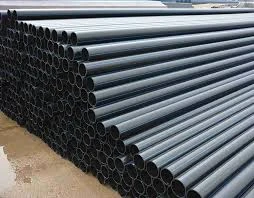okt . 18, 2024 14:33 Back to list
Exploring the Versatile Applications of PVC Plates in Various Industries
Understanding PVC Plates Versatile, Durable, and Practical
Polyvinyl chloride (PVC) plates have become an essential material in various industries and applications due to their versatility, durability, and cost-effectiveness. Whether used in construction, signage, or manufacturing, these plates offer a myriad of benefits that make them a popular choice among professionals and DIY enthusiasts alike.
What is PVC?
PVC is a synthetic plastic polymer made from the polymerization of vinyl chloride. It is one of the most widely produced synthetic plastic materials globally, known for its robustness and impressive resistance to environmental factors. PVC can be rigid or flexible, depending on the formulation, and its rigid form is often referred to when talking about PVC plates.
Properties of PVC Plates
1. Durability PVC plates are resistant to moisture, chemicals, and extreme weather conditions. This durability makes them ideal for both indoor and outdoor applications. Unlike wood or metal, PVC does not warp, rot, or corrode, extending the lifespan of products made from this material.
2. Lightweight Another significant advantage of PVC plates is their lightness compared to materials like wood or metal. This property makes them easier to handle and transport, reducing shipping costs and labor during installation or assembly.
3. Cost-Effective PVC is generally more affordable than many other materials, making it an economical choice for businesses and consumers alike. Its longevity coupled with low maintenance requirements results in further savings over time.
4. Easy to Work With PVC plates can be easily cut, shaped, and fabricated, allowing for a wide range of applications. They can be drilled, sawed, and painted, offering flexibility in design and functionality.
5. Aesthetic Appeal Available in various colors and finishes, PVC plates can be tailored to meet specific design needs. They can mimic the appearance of more expensive materials, adding aesthetic value without the higher price tag.
pvc plate

Applications of PVC Plates
1. Signage Due to their weather resistance and printability, PVC plates are commonly used for signage in retail environments, road signs, and promotional displays. The ability to produce vibrant graphics on PVC makes it an attractive option for advertising purposes.
2. Construction In the construction industry, PVC plates serve various purposes, including wall panels, ceilings, and cladding. Their moisture resistance makes them ideal for bathrooms and kitchens, areas prone to humidity and water exposure.
3. Manufacturing PVC plates are utilized in manufacturing components for machinery, equipment housings, and protective barriers. Their lightweight yet durable nature allows manufacturers to create long-lasting products that are easy to handle.
4. Crafting and DIY For hobbyists and DIY enthusiasts, PVC plates offer a straightforward medium to create diverse projects. From home decor to pet accessories, the possibilities are endless, thanks to the material's versatility.
Environmental Considerations
While PVC has many benefits, it is essential to consider its environmental impact. The production of PVC can lead to harmful emissions if not managed correctly. However, many manufacturers are moving towards more sustainable practices, including recycling and the use of eco-friendly additives. Additionally, the longevity of PVC products can offset some environmental concerns as they do not require frequent replacement.
Conclusion
PVC plates are a dynamic and practical choice for a variety of applications, offering durability, cost-effectiveness, and aesthetic versatility. Whether you are a professional in the construction industry or a DIY enthusiast looking for materials for your next project, PVC plates are worth considering. As innovations continue to improve the sustainability of PVC production and applications, we can expect this material to remain a staple in many sectors for years to come.
-
PVC Transparent Sheet Roll - Durable & Flexible PVC Plastic Sheet Roll for Industrial & Home Use
NewsJun.24,2025
-
High-Quality PVC PPR Pipes and Fittings Durable ERA PPR Solutions
NewsJun.10,2025
-
High-Quality Large HDPE Sheets & Large Diameter PVC Pipe Durable Large PVC Pipe Supplier
NewsJun.10,2025
-
High Density Polyethylene Cutting Board - Durable & Food Safe
NewsJun.09,2025
-
3 Inch PVC Pipe for Durable Irrigation Affordable & Reliable
NewsJun.09,2025
-
Premium PPR Plastic Water Pipe Fittings - Durable & Leak-Free
NewsJun.09,2025

